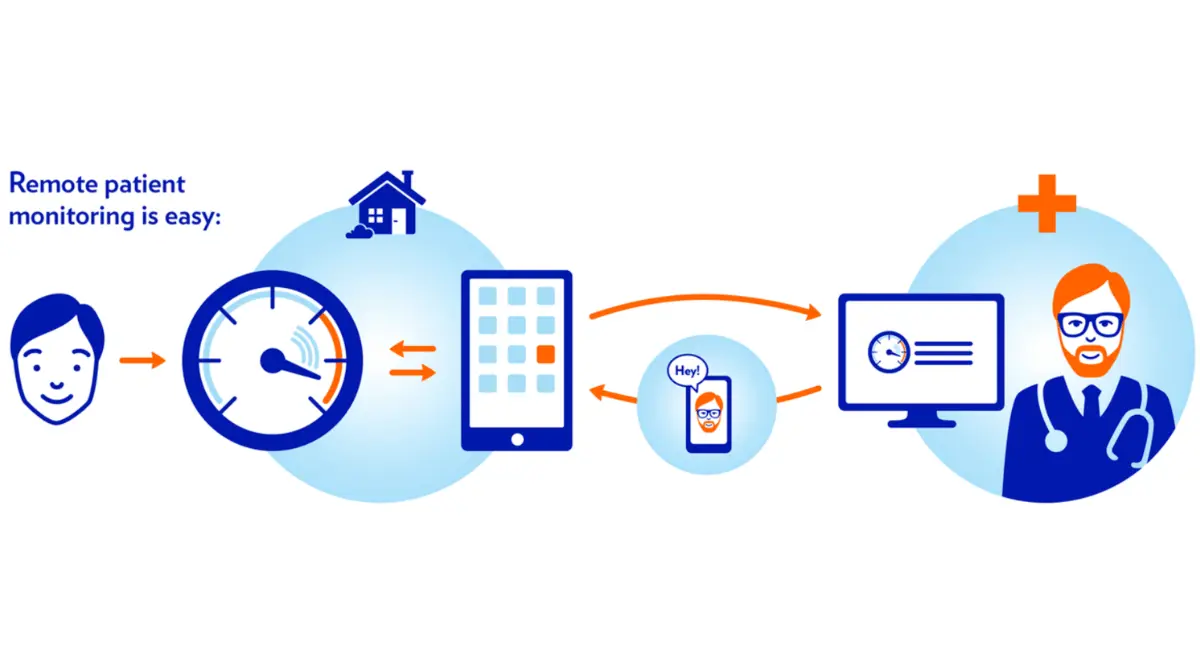Telemedicine in Pregnancy And Obstetrics

Cardio-Tocographic Examination (CTG)
Telemedical pregnancy care is a solution for reliable monitoring of the heart rate of the unborn child and the contractions of the expectant mother in the home environment. With the help of a portable device, the patient can perform a non-invasive CTG examination at any location at any time. The determined examination results are automatically transmitted to the telemedical center for detailed evaluation and interpreted by the medical staff on the basis of defined procedures. If there is a danger for the patient or for their unborn child, appropriate rescue measures are initiated.
Table of Contents
ToggleBenefits for the Patient
- Carry out CTG examinations in the home environment at a freely selectable time
- Continuous monitoring of the health of the unborn child
- A greater sense of security thanks to 24-hour support
- Shorter reaction times in health and life-threatening situations
- Easier and safer access to your own medical data
Benefits for Medical Institutions
- Patient monitoring even between doctor visits
- Shorter duration of inpatient treatment
- Better control in high-risk pregnancies
- Convenient access to all medical patient data
- Better reputation and image of the medical facility
Also learn, Benefits of remote patient monitoring with HealthArc.
Applications of CTG
CTG examinations enable the early detection of life-threatening dangers for the unborn child. Cardiotocography is a basic, widely used, non-invasive technique for monitoring the heart rate of an unborn child during pregnancy and childbirth. Cardiotocographic Examination (CTG) is suitable for women with single pregnancies between the 36th and 42nd week of pregnancy. Before using telemedical pregnancy care, every patient is examined by a gynecologist. This determines whether the solution is even suitable for the patient.
Continuous Monitoring
The patients carry out the CTG examinations in accordance with the recommendations of their gynecologist or midwife at certain intervals, at the recommended times, and in certain situations. Remote monitoring is particularly recommended for women whose pregnancies have been classified as high-risk pregnancies due to risk factors, concomitant diseases, or their age.
The CTG examinations are carried out independently by the patients. The examination time is usually 30 minutes. After completion of the CTG examination, the data is automatically sent to the telemedical center, where they are evaluated and diagnosed. After each examination, the patient is informed of the examination results. Should any abnormalities or irregularities occur, the medical staff will initiate the necessary measures according to the established procedures.
Comprehensive Support
The pregnant woman has the opportunity to monitor the health of her unborn child as part of telemedical prenatal care. It means that she is also looked after between the individual visits to the gynecologist or midwife. The examinations are carried out at the time specified by the patient or when troubling symptoms occur. In addition to the beneficial medical aspects and the ability to react quickly to dangers, telemedical pregnancy care can be used to listen to the heartbeat of the unborn child at any time. It has a positive effect on the general well-being and psychological state of the expectant mother.
Automatic CTG diagnosis based on the following algorithms:
- Basal rate (fetal heart rate)
- Bradycardia and tachycardia
- Decelerations
- Accelerations
- Long-term variability
- Short term variability
HealthArc e-Care Platform
Telemedical services are implemented via the HealthArc e-Care platform, which enables continuous remote monitoring of patients’ health. It creates the conditions for receiving and processing medical data as well as data that is collected via measuring devices for monitoring certain vital parameters. In addition, the software supports the medical staff in carrying out defined procedures.
Most recent blogs
Categories
- Advanced Primary Care Management
- Behavioral Health Integration
- Cellular Remote Patient Monitoring
- Chronic Care Management
- Chronic Care Management Billing
- Chronic Care Management CPT Codes
- Chronic Care Management Program
- Chronic Care Management Software
- Digital Health Platform
- Principal Care Management
- Principal Care Management CPT Codes
- Remote Care Programs
- Remote Monitoring Devices
- Remote Patient Care
- Remote Patient Monitoring
- Remote Patient Monitoring Billing
- Remote Patient Monitoring CPT Codes
- Remote Patient Monitoring Devices
- Remote Patient Software
- Remote Therapeutic Monitoring
- Remote Therapeutic Monitoring Billing
- Remote Therapeutic Monitoring CPT Codes
- Telemedicine & RPM
- Transitional Care Management
- Transitional Care Management Billing
- Transitional Care Management CPT Codes
Related Posts
- | Read Time: 4 mins
Telemedicine in The Field of Cardiology
- October 21, 2020 | Read Time: 3 mins





